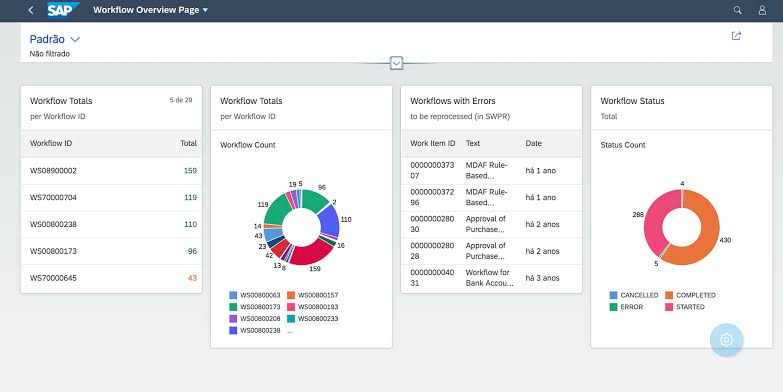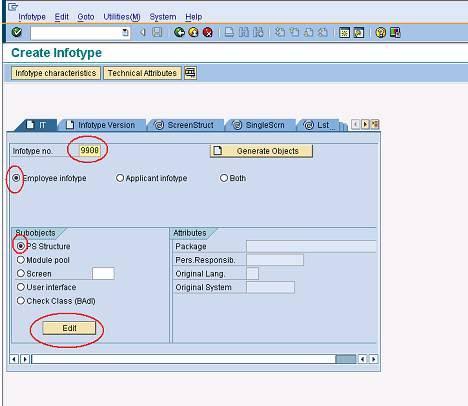Introduction to SAP Digital Boardroom



This configuration guide provides the information you need to set up the configuration of the Travel management system for sample client GIS. We have kept the scenarios simple and basic for better understanding. It further helps us to comprehend the entire process in sequential and logical manner in order to replicate the client Travel Management requirements into SAP system.


SAP Screen Personas allows companies to improve user productivity by personalizing their SAP ERP screens. You can simplify screens by removing fields you don’t use, converting free text entry to pull-down menus, and automating recurring keystrokes.
By providing the right information to the right users in the right context, they can get more done in less time with greater accuracy. With more intuitive SAP screens, organizations can enhance user satisfaction, minimize training time, and spend less money on screen modifications.

SAP Fiori is the new user experience (UX) for SAP software. It applies modern design principles for a completely reimagined user experience. SAP Fiori UX represents a personalized, responsive and simple user experience across devices and deployment options.
When combined with the power of the SAP HANA platform, SAP Fiori delivers unmatched responsiveness. SAP solutions, such as our SAP Business Suite applications, use SAP Fiori UX to provide a personalized and role-based user experience for enterprise-wide engagement across lines of business. It provides optimal usability on multiple devices for the best business interactions and ease of use. Now SAP users can enjoy the real-time user experience.

11 Simple Concepts to Become a Better Leader
All of the concepts are simple, and yet, perhaps in the name of revenues or the bottom line, we often lose sight of the simple things – things that not only make us human, but can actually help us become more successful. Below are the eleven most important principles to integrate to become a better leader:
“When people talk, listen completely. Most people never listen.” – Ernest Hemingway
Listening is the foundation of any good relationship. Great leaders listen to what their customers and prospects want and need, and they listen to the challenges those customers face. They listen to colleagues and are open to new ideas. They listen to shareholders, investors, and competitors.
“Storytelling is the most powerful way to put ideas into the world today.” -Robert McAfee Brown
After listening, leaders need to tell great stories in order to sell their products, but more important, in order to sell their ideas. Storytelling is what captivates people and drives them to take action. Whether you’re telling a story to one prospect over lunch, a boardroom full of people, or thousands of people through an online video – storytelling wins customers.
“I had no idea that being your authentic self could make me as rich as I’ve become. If I had, I’d have done it a lot earlier.” -Oprah Winfrey
Great leaders are who they say they are, and they have integrity beyond compare. Vulnerability and humility are hallmarks of the authentic leader and create a positive, attractive energy. Customers, employees, and media all want to help an authentic person to succeed. There used to be a divide between one’s public self and private self, but the social internet has blurred that line. Tomorrow’s leaders are transparent about who they are online, merging their personal and professional lives together.
“As a small businessperson, you have no greater leverage than the truth.” -John Whittier
There is nowhere to hide anymore, and businesspeople who attempt to keep secrets will eventually be exposed. Openness and honesty lead to happier staff and customers and colleagues. More important, transparency makes it a lot easier to sleep at night – unworried about what you said to whom, a happier leader is a more productive one.
“Individuals play the game, but teams beat the odds.” -SEAL Team Saying
No matter how small your organization, you interact with others every day. Letting others shine, encouraging innovative ideas, practicing humility, and following other rules for working in teams will help you become a more likeable leader. You’ll need a culture of success within your organization, one that includes out-of-the-box thinking.
“Life is 10% what happens to you and 90% how you react to it.” -Charles Swindoll
The best leaders are responsive to their customers, staff, investors, and prospects. Every stakeholder today is a potential viral sparkplug, for better or for worse, and the winning leader is one who recognizes this and insists upon a culture of responsiveness. Whether the communication is email, voice mail, a note or a tweet, responding shows you care and gives your customers and colleagues a say, allowing them to make a positive impact on the organization.
“When you’re finished changing, you’re finished.” -Ben Franklin
There has never been a faster-changing marketplace than the one we live in today. Leaders must be flexible in managing changing opportunities and challenges and nimble enough to pivot at the right moment. Stubbornness is no longer desirable to most organizations. Instead, humility and the willingness to adapt mark a great leader.
“The only way to do great work is to love the work you do.” -Steve Jobs
Those who love what they do don’t have to work a day in their lives. People who are able to bring passion to their business have a remarkable advantage, as that passion is contagious to customers and colleagues alike. Finding and increasing your passion will absolutely affect your bottom line.
“A true leader always keeps an element of surprise up his sleeve, which others cannot grasp but which keeps his public excited and breathless.” -Charles de Gaulle
Most people like surprises in their day-to-day lives. Likeable leaders underpromise and overdeliver, assuring that customers and staff are surprised in a positive way. There are a plethora of ways to surprise without spending extra money – a smile, We all like to be delighted — surprise and delight create incredible word-of-mouth marketing opportunities.
“Less isn’t more; just enough is more.” -Milton Glaser
The world is more complex than ever before, and yet what customers often respond to best is simplicity — in design, form, and function. Taking complex projects, challenges, and ideas and distilling them to their simplest components allows customers, staff, and other stakeholders to better understand and buy into your vision. We humans all crave simplicity, and so today’s leader must be focused and deliver simplicity.
“I would maintain that thanks are the highest form of thought, and that gratitude is happiness doubled by wonder.” -Gilbert Chesterton
Likeable leaders are ever grateful for the people who contribute to their opportunities and success. Being appreciative and saying thank you to mentors, customers, colleagues, and other stakeholders keeps leaders humble, appreciated, and well received. It also makes you feel great! Donor’s Choose studied the value of a hand-written thank-you note, and actually found donors were 38% more likely to give a 2nd time if they got a hand-written note!
The Golden Rule: Above all else, treat others as you’d like to be treated
By showing others the same courtesy you expect from them, you will gain more respect from coworkers, customers, and business partners. Holding others in high regard demonstrates your company’s likeability and motivates others to work with you. This seems so simple, as do so many of these principles — and yet many people, too concerned with making money or getting by, fail to truly adopt these key concepts.



Creating Infotype and configuring Subtypes for that Infotype:
Here is a step by step procedure of Creating the Infotype and Configuring the Subtypes for the newly created Infotype.
Go to Transaction PM01.
Enter the custom Infotype number which you want to create (Should be a 4 digit number, start with 9).
Select the ‘Employee Infotype’ radio button.
Select the ‘PS Structure Infotype’.
Click on Create, a separate table maintenance window appears…
Create a PS structure with all the fields you want on the Infotype
Save and Activate the PS structure
Go back to the initial screen of PM01.
Click on ‘All’ push button.
Click on ‘Technical Characteristics’. Infotype list screen appears
Click on ‘Change'(pencil) button
Select your Infotype and click on ‘Detail’ (magnifying glass) button
Give ‘T591A’ as subtype table
Give ‘T591S’ as subtype txt tab
Give your subtype field as subtype field
Save and come back to PM01 initial screen
Click on ‘Infotype Characteristics’, Infotype list screen appears
Click on ‘Change’ (pencil) button
Click on ‘New Entries’
Enter your Infotype number and short text
Here you have to set different Infotype Characteristics as per the requirement.
Save your entries.
Now the Infotype is created and ready to use.
If you want to change the layout of the Infotype as per your requirement…
In the PM01 initial screen…Select ‘Screen’ radio button and give 2000 as the screen name, then click on edit.
In the next screen, select ‘Layout Editor’ and click ‘Change’.
Screen default layout appears, here you can design/modify the screen; change the attributes of the fields, etc.
Save and activate. (Don’t forget to ‘Activate at every level).
